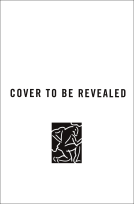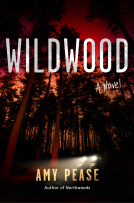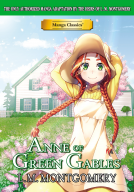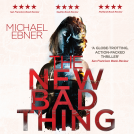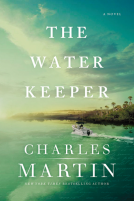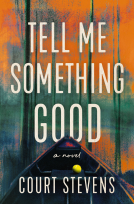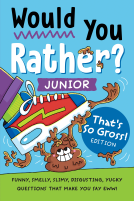
The Midwest Native Plant Primer
225 Plants for an Earth-Friendly Garden
by Alan Branhagen
This title was previously available on NetGalley and is now archived.
Send NetGalley books directly to your Kindle or Kindle app
1
To read on a Kindle or Kindle app, please add kindle@netgalley.com as an approved email address to receive files in your Amazon account. Click here for step-by-step instructions.
2
Also find your Kindle email address within your Amazon account, and enter it here.
Pub Date Jul 21 2020 | Archive Date Aug 31 2020
Talking about this book? Use #TheMidwestNativePlantPrimer #NetGalley. More hashtag tips!
Description
Bring your garden to life—and life to your garden!
Do you want a garden that makes a real difference? Choose plants native to our Midwest region. The rewards will benefit you, your yard, and the environment—from reducing maintenance tasks to attracting earth-friendly pollinators such as native birds, butterflies, and bees. Native plant expert Alan Branhagen makes adding these superstar plants easier than ever before, with proven advice that every home gardener can follow. This incomparable sourcebook includes 225 recommended native ferns, grasses, wildflowers, perennials, vines, shrubs, and trees. It’s everything you need to know to create a beautiful and beneficial garden.
This must-have handbook is for gardeners in Arkansas, Illinois, Indiana, Iowa, Kansas, Michigan, Minnesota, Missouri, Nebraska, North Dakota, Ohio, South Dakota, and Wisconsin.
Available Editions
| EDITION | Other Format |
| ISBN | 9781604699920 |
| PRICE | $24.99 (USD) |
| PAGES | 256 |
Average rating from 26 members
Featured Reviews
 Media/Journalist 16509
Media/Journalist 16509
This is a perfect book for today's environmentally conscious gardener. We are realizing more and more that many of the trees, shrubs and flowers that we plant provide no real food for wildlife like birds and pollinators, and that it serves us all to change that (keep in mind that putting out food for the birds does no good if they need caterpillars and other insects to feed their babies). Native plants are also well suited to easily grow in our gardens without extra water or care, so they make double sense. This book talks about these issues and then offers a huge selection of recommended trees, shrubs, ground covers, perennials, etc. by group.
I love that the author also talks about edible varieties, since it makes sense not just to feed wildlife but ourselves too with edible landscaping like elderberries, hazelnuts, etc. Small icons above each plant show if they are particularly good for birds, butterflies, etc.
Some of the plants featured are the ONLY food source for some varieties of butterflies (!), and nobody plants them. It is no wonder so many species are going extinct, and so helpful that guides like this can help us try to help these species.
Color photos are provided for every plant, plus tons of information about bloom times, how to propagate them and much more. Many varieties thrive in partial or full shade, which was another pleasant surprise for me.
I love this book, and have a huge list of plants I want to add to my (already full) gardens now.
I read a temporary digital ARC of this book for the purpose of review.
The Midwest Native Plant Primer: 225 Plants for an Earth-Friendly Garden by Alan Branhagen is a beautiful source of information for home gardening! There are chapters explaining the requirements for plants native to the midwest. The home gardener can choose native plants that will thrive in sun, shade, and prairie. This book includes an expansive list of compatible trees, shrubs, and plants. I really liked the choices for fruit, fragrance and the plants which will be drought tolerant. I love having bees, butterflies, and a variety of birds to visit my garden. This book offers information for planning so many types of gardens such as rock gardens, water gardens, wildflowers, and perennials. The plants are beautifully photographed!
Publication Date: July 7, 2020
Thank you to NetGalley and the publisher for the opportunity to read and review this book.
 Tara H, Librarian
Tara H, Librarian
I received a copy of this arc from NetGalley for an honest review. Being new to gardening this was a great book to flip through as I am making decisions for our garden at work. We will be buying a copy for sure. Excellent information, great pictures and answered most of my questions.
 Denice L, Reviewer
Denice L, Reviewer
I live in Oklahoma and try to incorporate as many native plants as I can into my planned beds. This insures their continuity and makes my gardens so much more beautiful. This book gave me many tips and ideas that will soon find their home in my garden. Excellent book for gardeners of any skill.
 Reviewer 206781
Reviewer 206781
The Midwest Native Plant Primer: what an accurate title! This beautiful reference book should also have a place of honor on coffee tables of garden enthusiasts, whether Midwesterners or not. The photographs and introductory essays provide inspiration and enjoyment. The encyclopedic sections are beautifully illustrated as well. In all, this is an attractive and useful volume I will gladly recommend.
 Deborah W, Reviewer
Deborah W, Reviewer
This book is for people who are looking for information about native plants for landscaping purposes. The author talked about the advantages of using native plants, provided tips on how to grow them successfully, and suggested using these plants specifically to attract beneficial insects, butterflies, or birds. He then provided information on specific native trees, shrubs, groundcovers, perennials and vines that are good for landscaping. Each entry gave the common name and Latin name of the plant, what animals it attracted, where it is usually found in the wild (like woodland understory), amount of light that it likes, some background information, why it is desirable in landscaping (interesting bark, colorful leaves, attracts birds, etc.), and a picture or two of the plant. I'd recommend this book to someone looking for native plant ideas for landscaping purposes.
 Colleen L, Librarian
Colleen L, Librarian
A beautiful book to look at, The Midwest Native Plant Primer is a great read for those interested in native landscape and finding plants meant to grow in their particular area of the world. The best part of the book is the very detailed chapters on trees, shrubs, ground cover, etc. with pictures and where they are found. A fun book to page through for anyone interested in midwest gardening or plants native to the midwest.
This book has great photos and serves as a great reference book. I learned a lot and appreciated that the book is perfect for people who know nothing about horticulture!
 Cris R, Reviewer
Cris R, Reviewer
This will be a fantastic reference book for midwesterners! I have little talent for gardening but am trying to learn more. I love the idea of incorporating more plants that are native to the area, and I can see turning to this for advice in planning a beautiful yard!
Thanks to Net Galley and the publisher for an advance digital review copy of this title. All opinions are my own.
 Sheryl H, Reviewer
Sheryl H, Reviewer
This book is filled with beautiful pictures and descriptions of the plants in the Midwest. I was able to identify a few of the plants in the field by my house. I was also able to pick out some plants that I'm really excited to plant in my yard.
This was an free copy from netgalley.
The images in this book are amazing. The information is extremely useful to anyone interested in growing a native garden. I am hoping to convert my flowerbeds into native plants to encourage honeybees. The book provides a breakdown by plant category and describes their growing needs. It is all extremely useful information.
Each year I spend A LOT of money on perennials that don’t seem to grow again the following year. The description caught my eye right away, “ Choose plants native to our Midwest region. The rewards will benefit you, your yard, and environment--from reducing maintenance tasks to attracting earth-friendly pollinators such as native birds, butterflies, and bees.” Yes! Yes! That is exactly what I am trying to do in my little butterfly garden. As I read through the book I read page after page of great suggestions of plants that will grow in my area. There are so many plants that grow great in the Midwest however you just need to know which ones. What I loved about this book is that it had something for every type of gardener. If you are looking to create a rock garden or more of a water garden, there are suggestions for that. If you want more of a prairie garden or my favorite butterfly garden it is all in this book. The photos are beautiful and there is a great section of the descriptions of all the plants and where and how to best grow them. If you love gardening and live in the Midwest I highly recommend this book for you. I know I will be ordering one for myself. I definitely want a hard copy of the book on my bookshelf for easy reference.
 Terri S, Reviewer
Terri S, Reviewer
I am an experienced gardener, trained by my state University as an Extension Master Gardener and co-write an answer column for my local paper as well as answer questions from the public online. A lot of the questions are because someone did not know about the "right plant. right place". This book addresses this, including looking at the local environment and designing with foliage colors in addition to thinking about the flowers.
It has lots of great information for a newer to intermediate gardener. I used the plant listing while planning a mostly native garden to cover a new septic system. It has a pretty good inventory of trees, shrubs and perennials that included pictures and some of the plusses and minuses of the plant. (Take the "self-sows prolifically" warnings to heart. It can happen to you.) It tells what kind of environment to which the plants are native, so when you see "dry prairie" you know, after reading what that means earlier in the book, that it might not be appropriate for your moist, shady area.
I highly recommend it for someone who is looking at adding to their garden or wondering why theirs isn't looking like they hoped. Although the focus is natives, it provides info valuable to introduced varieties.
 Reviewer 689165
Reviewer 689165
I received a complimentary copy of this book through NetGalley. Opinions expressed in this review are completely my own.
This book covers plants in the Midwest American states (Michigan, Ohio, Indiana, Illinois, Wisconsin, Minnesota, Iowa, and Missouri). This book also covers about the native plants. This book has amazing pictures, the scientific name, where to plant the plants, and tells if the plants need sun or not. This is very informative book. It also talks about the best plants for the native animals. This book is also great for homeschooling or state notebook. This book is very helpful, and I hope there will be more books for the rest of the regions. I give this book five stars.
A nice guide to native planting - how to choose the perfect plants for your location and things to consider such as water availability and soil type. Other considerations such as aesthetics, garden type (rock garden, butterfly garden, etc.) are mentioned as well. This book includes 225 plants (trees, shrubs and flowers) with full color photos, and a detailed description. Each plant also includes an easy icon to indicate its appropriateness for butterfly and/or bird gardens, as well as lighting needs.
 Librarian 431790
Librarian 431790
A great books that helped me to improve my gardening knowledge and discover new plants.
It's well written and informative, an excellent read for anyone who loves gardening.
Highly recommended.
Many thanks to the publisher and Netgalley for this ARC, all opinions are mine.
 Becky M, Educator
Becky M, Educator
This book was full of good information. I enjoyed the section of Selecting Native Plants and Garden Worthy Midwest Native Plants. It had a very comprehensive guide to trees, shrubs, ground cover and perennials and vines. The useful resources page was also full of really fantastic resources. As a whole I enjoyed this book and definitely added to my list of native plants I want to add to my yard. The pictures are beautiful also.
The Midwest Native Plant Primer is a gardening guide with herbal encyclopedia covering a plethora of indigenous plant species for gardeners in the midwestern USA. Due out 21st July 2020 from Timber Press, it's 256 pages and will be available in paperback and ebook formats.
As we learn more about the interconnectedness of local biomes and the desirability of supporting indigenous pollinators, plant, and animal species, more gardeners are moving to reduce or eliminate potentially invasive species and substitute with native species. This is a regional guide aimed at the midwestern USA and includes a huge variety of native plant species and their uses in the garden.
I liked the layout of the book which was very well organized and easy to follow. The introduction provides a good overview of native plants, why they're desirable for habitat and food for local species, how the choice of these species for our gardens actually benefits us as gardeners (less maintenance, suited to the climate and growing conditions already, hardiness), and more.
The plant primer itself takes up the majority of the page content and is split into plant types: native plants, trees, shrubs, groundcovers, perennials and vines. Each of the primer entries contains the botanical and some common names for the plant, habitat/soil conditions and culture requirements, active growing seasons and other special info, size, light requirements, a good description, and a clear picture. There are 225 species contained, enough to provide lots of alternatives for almost any garden role.The end of the book contains appendices which include a hardiness and climate chart, bibliography, good resources list, and index.
This is one of the better regional gardening guides which I've reviewed. Five stars.
Disclosure: I received an ARC at no cost from the author/publisher for review purposes.
 Catlin P, Reviewer
Catlin P, Reviewer
This book is an excellent guide for the native plants of the region. It's beautifully and lavishly illustrated with both examples of the types of natural landscapes (e.g., tallgrass prarie, hardwood forests) as well as the native plants themselves. The book is part garden technique, design, and catalog. The catalog focuses on "garden-worthy" native plants, which I think is appropriate. The text in the book is a bit overwhelming in the beginning, if you're looking for a "quick guide," but the plant descriptions in the catalog portion are brief and useful.
I was a little perplexed, when viewing the covers of this book, to see the map of what is considered Midwest. Other than that map, it's never really clear in the book itself why the northern parts of ND, MN, WI and MI are not included. It would have been nice to have the Midwest defined more specifically and geographically in the introduction.
 Ryan M, Reviewer
Ryan M, Reviewer
I am a gardener in the sense that I plant some things in various places and hope that they grow. I have a pretty decent sized rain garden in the front yard, a huge section of golden alexanders and a small butterfly garden on the street. I never really know what to move or take out and most gardening books seem overwhelming to me when it comes to how-tos.
This book is very nice in that it doesn't try to cover everything. After an introduction about native plants in the midwest and different types of gardens/settings, the author jumps right into the plants. He has a picture, some recommended areas (woodland, rain garden), sun requirements, whether it attracts birds or butterflies or bees, and a write-up of size and which plants to pair it with. The write-ups are short but helpful. This isn't a giant book but a nice guide to native plants for the Midwest. The only thing that would make this book better is a table in the back with a quick summary of the 225 plants and their characteristics. I just wish that I had more yard to work with.
Readers who liked this book also liked:
L.M Montgomery
Children's Fiction, Comics, Graphic Novels, Manga, Teens & YA



